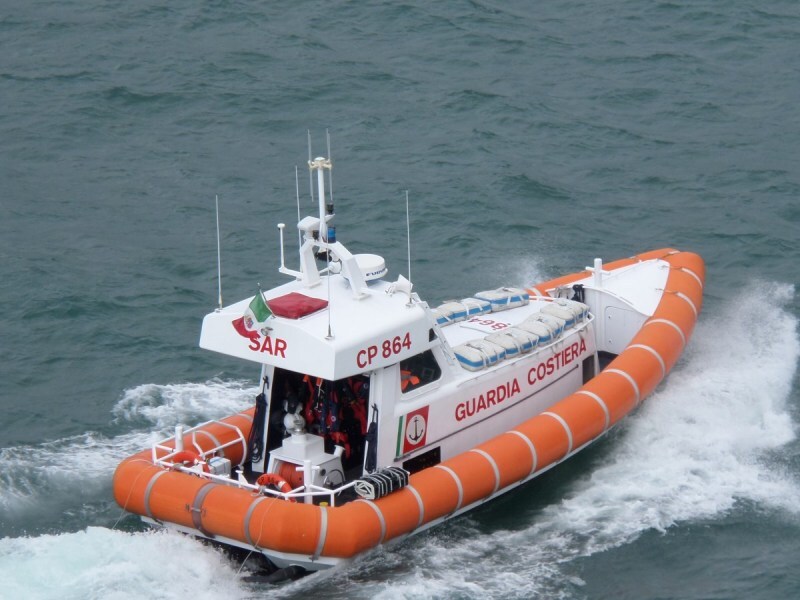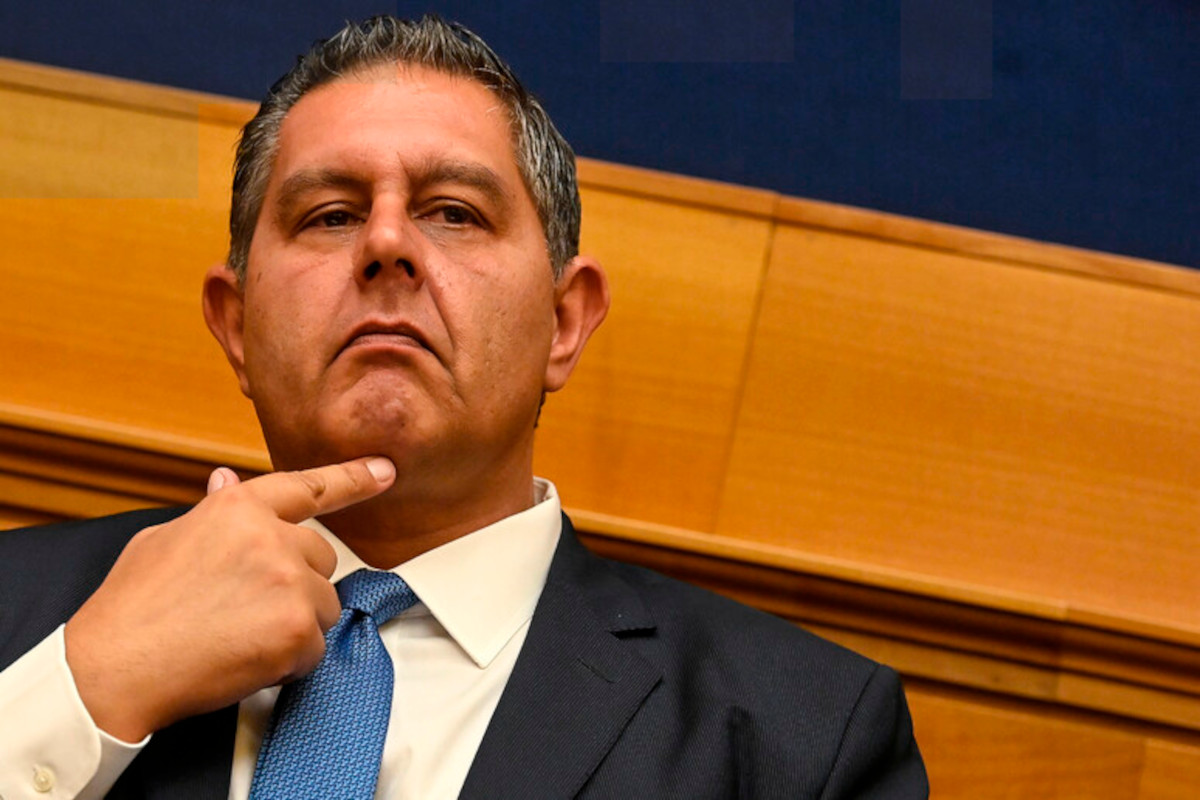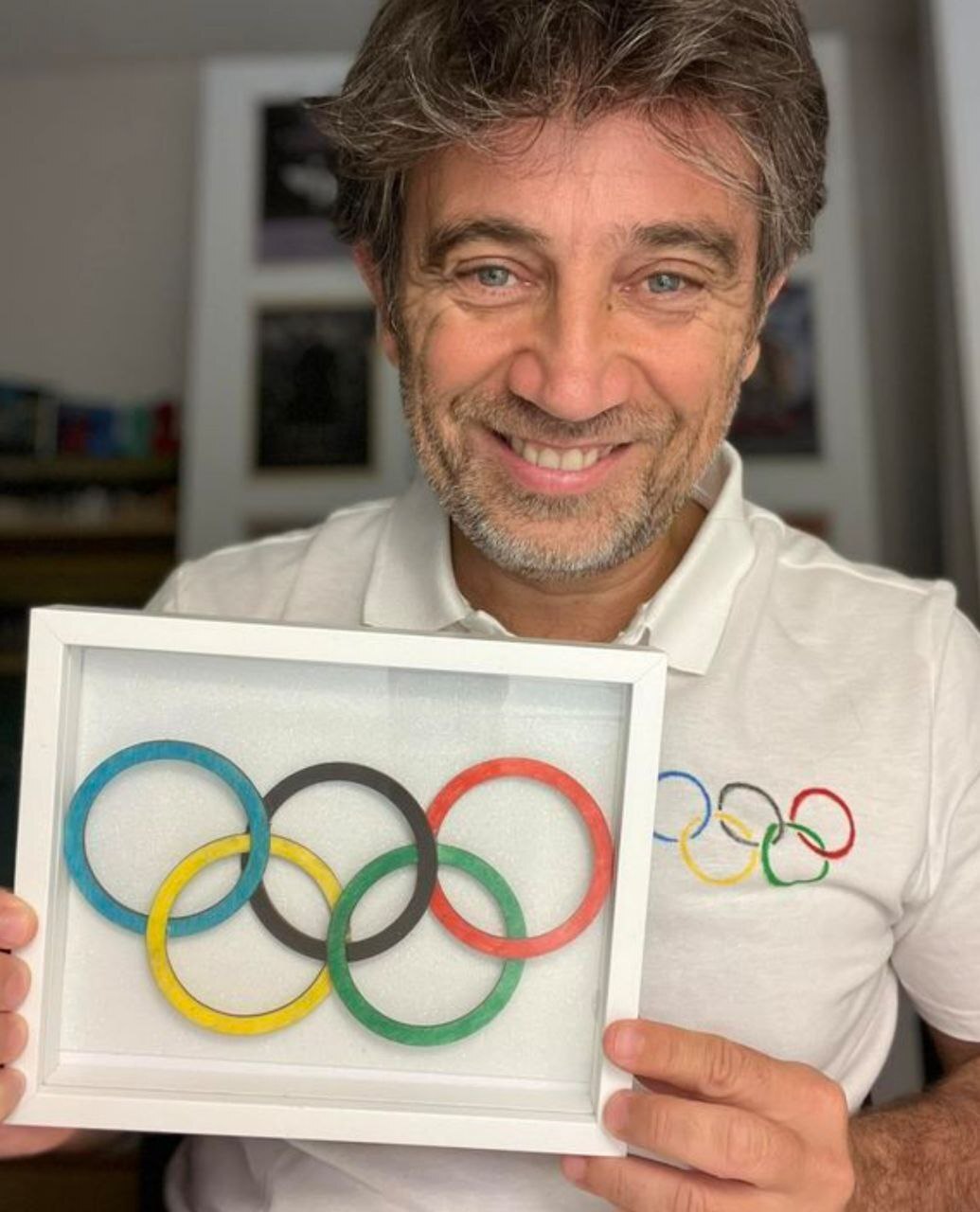Il Nervi Music Ballet Festival 2023 si appresta ad accogliere una delle presenze più significative ed emozionanti della sua programmazione: il balletto cinese Tao Dance Theater Ballet. Questa celebre compagnia, uno dei complessi emergenti più apprezzati nel panorama della danza contemporanea, si esibirà a Genova, nei Parchi di Nervi, martedì 18 luglio alle ore 21:15, presentando in prima assoluta la nuova coreografia “Circle”, vincitrice del Leone d’argento alla Biennale danza 2023, la presenza del Tao Dance Theater Ballet non rappresenta solo un momento artistico di alto livello, ma anche un importante ponte culturale tra Italia e Cina.
Per l’occasione la redazione di LiguriaDay ha intervistato in esclusiva il coreografo e co-fondatore, (insieme a Duan Ni e Wang Dao) della compagnia, Tao Ye, il quale ha spiegato com’è nato e come si è sviluppato il pensiero coreografico, quale filosofia lo contraddistingue e quali sono i progetti per il futuro.
Versione ITA/ENG
Tao Ye, come descriverebbe il suo stile coreografico in tre parole?
Sottrazione, Purezza, Ripetizione.
Qual è l’origine del suo amore per la danza e come ha influenzato il suo percorso verso il ruolo di coreografo?
Inizialmente non ero appassionato di danza. Ma quando avevo 12 anni, un giorno stavo imitando dei movimenti di yoga davanti alla TV e mia nonna ha scoperto che il mio corpo era naturalmente morbido, quindi sono stato mandato a una scuola di danza per imparare a ballare. In quel momento, ho pensato che fosse la danza a scegliere me. Non è stato fino a quando ho incontrato la danza moderna all’età di 19 anni, cosi sono stato segnato dalla danza, perché la mia concezione della danza moderna è “danza ora”: “ora” è questo momento, e “danza” è movimento, quindi per me la danza moderna non è uno stile, ma piuttosto un’interrogazione che mi pongo senza fine, come mi muovo in questo momento? Quando me ne sono reso conto, ho scelto la danza.
Quando ha realizzato per la prima volta che voleva diventare un coreografo e come ha raggiunto questo obiettivo?
Fin da piccolo sono stato un bambino problematico. Non ero espressivo, e anche un po’ autistico, mi piaceva fantasticare. Da bambino, immaginavo spesso dove fossero i confini di questo mondo, o se ci fosse una verità assoluta nell’Universo? Ancora oggi, rifletto su queste domande metafisiche. Quando creo una danza, queste domande possono essere rifratte nei corpi di me stesso e degli altri, così ho fondato il Tao Dance, per usare la danza come canale per esplorare e comprendere tutto in questo mondo.
Da dove trae ispirazione per le sue coreografie e come si riflette nel lavoro che presenterà a Genova, “Circle”?
Il corpo è un cerchio. Quando mandi avanti un movimento, tornerà sicuramente indietro. Il ritmo che forma avrà un processo curvilineo. Testa, spalla, mano, vertebre, fianchi, ginocchia, piedi, ogni centimetro del corpo può essere disegnato come un cerchio. Guidando, trasmettendo, seguendo, è un ciclo senza fine, proprio come la fusione delle gocce d’acqua a formare un’onda continua. Il movimento circolare è la danza eterna.
Qual è il messaggio più profondo che vuole trasmettere attraverso il suo lavoro?
Esplorare interiormente è anche infinitamente meraviglioso.
Come è nata la sua collaborazione con Duan Ni e Wang Hao, e come le vostre dinamiche influenzano il risultato finale delle vostre creazioni?
Nel 2008, Wang Hao, Duan Ni ed io abbiamo fondato insieme il Tao Dance. Eravamo solo in tre, non avevamo uno spazio, progetti, né soldi. Nonostante non avessimo assolutamente nulla, condividevamo un sogno, che era il lavoro stesso. Questo è l’obiettivo più importante ed essenziale per noi tre per stare insieme, ovvero la creazione stessa e la danza stessa.
Nel primo anno (2008), abbiamo creato due opere, ovvero “重” (chong) e “重” (zhong) da “重3”. Dopo di che, ho iniziato a creare una danza solo per Duan Ni, che è stata ispirata da me a tornare da New York nel luglio 2008. Quando è finalmente rientrata, ho iniziato a pensare a quale tipo di danza avrei dovuto creare per lei per riflettere perfettamente la tensione e l’energia del suo corpo. In effetti, il suo corpo e la sua danza erano così impeccabili che tutto poteva funzionare con lei, qualunque movimento sarebbe sembrato accettabile, il che in effetti è diventato un ostacolo per me. Che tutto possa funzionare significa che nulla funziona, quindi per una creazione seria, ho bisogno di trovare un indizio, una restrizione, che alla fine ha portato a STICK.
Nei successivi quindici anni, abbiamo portato avanti la creazione di “Numerical Series” ad un ritmo medio di un’opera all’anno, ne abbiamo già creato 15. Allo stesso tempo, nel 2021, ho anche iniziato la “Non-numerable Series”, che è una creazione più aperta e diversificata. L’opera “Movimento circolare·Contrasto” che sarà presentata a Genova, è una delle opere di questa serie.
Qual è stato il momento più gratificante della sua carriera fino ad ora e perché?
Per me, l’arte ha possibilità infinite, ma la vita è unica. Quindi, considero ogni performance e ogni esperienza di danza come l’ultima, poiché sono uniche e irripetibili. Per me, questo momento istantaneo è l’eternità.
Cosa ne pensa della fusione tra danza e altre forme d’arte, come la moda, alla luce della sua collaborazione con Y-3 nel 2015?
La danza può essere multidisciplinare e interdisciplinare, perché è un’espressione del corpo. Sul palco, può non esserci nessun oggetto di scena, costume, musica, installazione, immagini video…ma non può mancare il corpo, la presenza fisica. L’arte ruota intorno alle persone, perché la creazione umana non può essere fatta senza partire dal punto di vista umano. Pertanto, la danza come forma d’arte può collegare tutte le possibilità del passato, presente e futuro.
Cosa significa per lei aver ricevuto il Leone d’Argento alla Biennale di Danza 2023?
Un incoraggiamento per me.
Quale ruolo ha giocato l’estetica orientale nella sua interpretazione della danza contemporanea?
Questa è la mia origine.
Può parlarci del suo approccio rivoluzionario al concetto di “Movimento Circolare”?
Filosofia speculativa, Lavoro, Ripetizione, Razionalità, Infinito, Trasformazione, Torsione, Curva, Piegatura, Sospensione, Caduta, Peso, Gravità, Centro di gravità, Punto, Asse, Linea, Flusso, Superficie, Guida, Trasmissione, Seguito, Onda, Ondulazione, Connessione, Combinazione, Processo, Esistenza, Macro-, Micro-, Istantaneo, Eternità, Molteplicità, Dualità, Unità, Neutralità, Via di Mezzo, Auto-Consapevolezza.
Può dirci di più sul corso “Sistema di Movimento Circolare” e come si inserisce nel contesto più ampio del suo lavoro con lo Studio TAO?
Il sistema di movimento circolare è un metodo di allenamento creato da Duan Ni e da me, che si concentra sul raffinamento della connessione tra il corpo e la natura. Consideriamo il corpo come un asse e il mondo come un cerchio, creando così connessioni infinite attraverso movimenti curvi e fluttuanti. Nella nostra opinione, ognuno ha le proprie caratteristiche fisiche, ma ci sono anche delle somiglianze che possono essere condivise. Il nucleo del movimento circolare è esplorare dall’interno del corpo, includendo tutte le connessioni tra punti e punti, da punti a linee, e da linee a tutto il corpo. La logica del corso include: Prima cosa, capire razionalmente e scientificamente il principio del movimento del corpo; Secondo, evitare interruzioni, urti e riavvii del corpo, ma cercare di -ciclare- continuamente l’energia; Poi, prestare attenzione all’auto-osservazione e percepire l’ambiente circostante dall’interno verso l’esterno.
Quali sono i suoi piani futuri per il Balletto del TAO Dance Theater?
Creare, continuare a esplorare come può muoversi il corpo, continuare a ballare e trovare un nuovo linguaggio.
Qual è la sua opinione sul panorama attuale della danza contemporanea a livello globale?
Sembra disordinato, ma in realtà ha una certa regola.
Quali consigli avrebbe per i giovani aspiranti ballerini e coreografi?
Sii te stesso.
Qual è il valore della danza, in particolare della danza contemporanea, in un mondo sempre più digitale e interconnesso?
La danza non si basa puramente sui concetti. È l’arte di celebrare l’intimità con la vita e la natura, credo nel movimento e nel lavoro della danza, e attraverso la partecipazione corporea nel raggiungere l’estremo si può raggiungere uno stato di mente trascendentale. Questo è il cammino più duro, ma anche il più diretto. La tecnologia moderna allontana gli esseri umani dal loro corpo, per esempio i telefoni stanno sostituendo il nostro senso di guardare e ascoltare, diventando l’estensione del nostro organo. In futuro, gli esseri umani saranno più desiderosi di allontanare il corpo tramite la tecnologia, o addirittura il nichilismo potrebbe sostituire la realtà. Eppure, al momento, tra l’esplorazione artistica e il lavoro fisico, ci viene concessa l’eternità. Io ballo, io esisto.
Info e biglietti : https://nervimusicballetfestival.it/biglietti/#

English Version
Tao Ye, how would you describe your choreographic style in three words?
Subtraction, Purity, Repetition
What is the origin of your love for dance and how has it influenced your journey to becoming a choreographer?
I was not passionate about dance at the beginning. But when I was 12 years old and one day I was imitating yoga movement in front of the TV and my grandmother discovered my body was naturally soft, so I was sent to a dance school to practice dancing. At that time, I thought dance chose me. It wasn’t until I met modern dance at the age of 19 that I started to be moved by dance, because my understanding of modern dance is “dance now”: “now” is this moment, and “dance” is movement, so modern dance is not a style for me, instead it is an endless question I ask myself , how do I move at this moment? When I realized that, I chose dance.
When did you first realize that you wanted to become a choreographer and how did you achieve this goal?
I have always been a problem kid during my childhood. I am not expressive, and even somewhat autistic, but I like to fantasize. When I was a child, I often imagined where the boundaries of this world were, or whether there was the absolute truth in the Universe? Even now, I still think about these meta-questions. When I create dance, these questions can be reflected in the bodies of myself and others, so I founded Tao Dance, to use dance as a channel to explore and understand everything in this world.
Where do you draw inspiration for your choreography and how is this reflected in the work you will present in Genoa, “Circle”?
The body is a circle. When you send out a movement, it will definitely come back. The rhythm it forms will have a curved process. Head, shoulder, hand, vertebrae, hips, knees, feet, every inch of the body can be drawn as a circle. Driving, transmission, and follow-up, it is an endless cycle, just like the fusion of water droplets to form a continuous wave. The circular movement is the eternal dance.
What is the deeper message that you want to convey through your work?
To exploring inwardly is also infinitely wonderful.
How did your collaboration with Duan Ni and Wang Hao come about, and how do your dynamics influence the final result of your creations?
In 2008, Wang Hao, Duan Ni and I co-founded Tao Dance. There were only three people, we do not have space, projects, or even money. In spite of the situation where we had absolutely nothing, we shared a dream, which was the work itself. This is the most important and essential goal for the three of us to get together, that is the creation itself and the dance itself.
In the first year (2008), we created two works, namely “重” (chong) and “重” (zhong) from “重3Weight x 3 “. After that, I started to create a solo dance for Duan Ni, who was inspired by me to come back from New York in July 2008. When she finally came back, I started to think about what kind of solo dance I should create for her to perfectly reflect the tension and energy of her body. In fact, her body and dance were so impeccable that everything could work out by her, however she was moving, it would always look acceptable, which in fact became an obstacle for me. That everything can work means nothing is working, thus for a serious creation, I need to find a clue, a restriction, which in the end led to STICK.
In the following fifteen years, we have been pushing the creation of “Numercal Series” at an average rate of one work per year, and we have already created till 15. At the same time, in 2021, I also started the “Non-numerable Series”, which is a more open and diverse creation. The work Circular Movement·Contrast that will be performed in Genoa is a piece from this series.
What has been the most rewarding moment of your career so far and why?
For me, art has infinite possibilities, but life is only once. Therefore, I regard every performance and every dance experience as the last one, since they are unique and unrepeatable. For me, this instantaneous moment is the eternity.
What do you think about the fusion of dance with other art forms, such as fashion, in light of your collaboration with Y-3 in 2015?
Dance can be multidisciplinary and interdisciplinary, because it is an expression of the body. On the stage, there can be no props, costumes, music, installations, video images…but it cannot be without people or without the body. Art revolves around people, because human creation cannot be done without starting from the human point of view. Therefore, the dance as an art form can connect all possibilities of the past, present and future.
What does it mean to you to have received the Silver Lion at the 2023 Dance Biennale?
An encouragement for me.
What role has Eastern aesthetics played in your interpretation of contemporary dance?
This is my origin.
Can you tell me about your revolutionary approach to the concept of “Circular Movement”?
Speculative philosophy, Laboring, Repetition, Rationality, Infinity, Transformation, Twist, Curve, Fold, Suspension, Fall, Weight, Gravity, Center of Gravity, Point, Axis, Line, Flow, Surface, Driving, Transmission, Follow-up, Wave, Ripple, Connection, Combination, Process, Existence, Macro-, Micro-, Instant, Eternity, Multiplicity, Duality, Unity, Neutrality, Middle Way, Self-Insight.
Can you tell us more about the “Circular Movement System” course and how it fits into the wider scope of your work with the TAO Studio?
The circular movement system is a training method created by Duan Ni and me, focusing on refining the connection between the body and the nature. We regard the body as an axis, and the world a circle, so creating infinite connections through curved and flowing movements. In our opinion, everyone has their own physical characteristics, but there are also commonalities that can be shared. The core of circular movement is to explore from the inside of the body, including all connections between points and points, from points to lines, and from lines to the entire body. The logic of the course includes: First, to rationally and scientifically understand the principle of body movement; Second, to avoid interruptions, bumping against and restarts of the body, but try to continuously cycle the energy; Then, pay attention to self-observation and perceive the surrounding environment from the inside out.
In daily training, we guide the dancers to develop a kind of imaginative consciousness, which is to draw a circle with your body brush. Duan Ni describes it this way: trying to imagine that a brush grows from every corner of your body, and using these brush tips to draw continuous flowing arcs. There is no mirror in our rehearsal space, so dancers need to observe inside every inch of the body through movement, and use the circling consciousness to form the continuation of points, generating a wave-like curving flow. At the same time, it is necessary to pay attention to connect every inch of the space with the body, so as to achieve circular motion to contact the body with every moment and every angle of the time and space. Each movement is to ask a question, and the next movement is to respond.
What are your future plans for the TAO Dance Theater Ballet?
To create and to continue explore how body can move, to continue to dance, and (find )new language.
What is your opinion on the current landscape of contemporary dance globally?
It looks miscellaneous on the outside, but does have a certain rule inside.
What advice would you have for young aspiring dancers and choreographers?
Be yourself.
What is the value of dance, especially contemporary dance, in an increasingly digital and interconnected world?
Dance is not purely based on concepts. It is the art of celebrating the intimacy with the life and the nature, I believe in dance movement and laboring, and through bodily participation in achieving extremity would deliver a transcendental state of mind, which is the hardest path, yet the most direct way. The modern technology distances humans with their body, for example phones are replacing our sense of looking and listening, becoming the extension of our organ. In the future, human beings are more eager to alien the body via technology, or even the nihilism would replace the reality. Yet at the moment, among artistic exploration and physical laboring, we are granted with the eternity. I dance, I exist.
More info and Tickets: https://nervimusicballetfestival.it/biglietti/#
Ti potrebbe interessare: https://liguriaday.it/2023/07/04/nervi-music-ballet-festival-tao-dance-theater-ballet-circle/
 LiguriaDay Quotidiano online
LiguriaDay Quotidiano online






